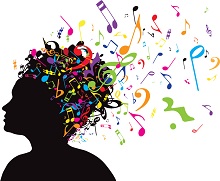Neurophysiology of Music

How the brain creates coherent perceptions of music from complex combinations of sounds is poorly understood. For example, when listening to an orchestra, one can choose to listen to the ensemble, to a particular instrument (e.g. the trumpet), or to a group of instruments (e.g., the strings). How we do this so easily is simply not known. The project aims to build on the success of methods developed for investigating neuro-electric activity in response to other types of natural stimuli (e.g., speech). Unlike standard methods, which usually require researchers to present simple, discrete stimuli in isolation (e.g., beeps and clicks), these new methods allow the acquisition of spatiotemporally detailed responses (i.e., where and when in the brain) to complex, continuous stimuli. This line of research could have important implications for both cognitive and clinical research, for understanding the biological psychology of music, for the development of therapeutic techniques based on music, and could, perhaps, lead to a greater understanding of the creative process underlying musical composition.
